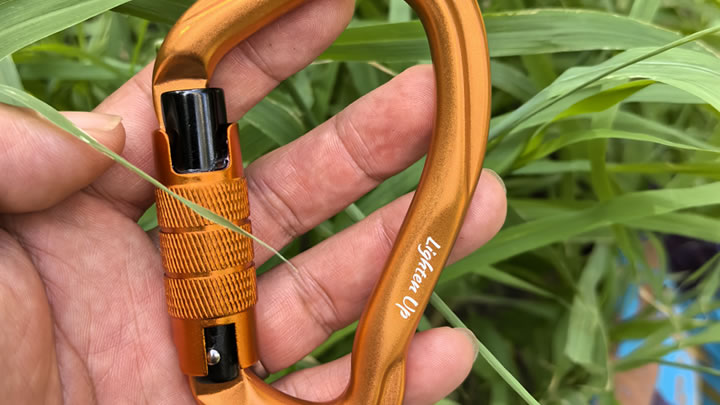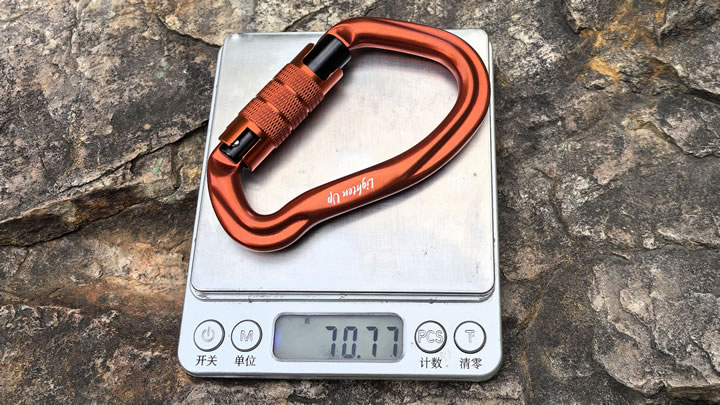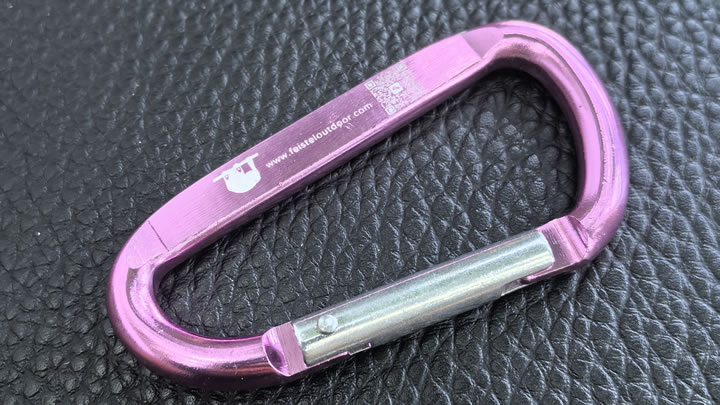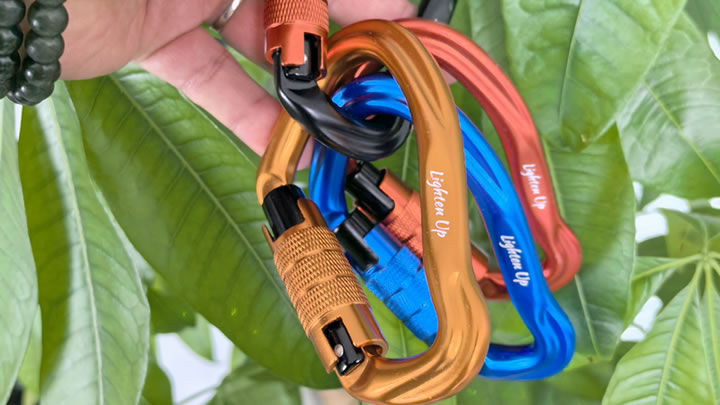Aluminum vs. steel carabiner clips: Pros and cons?
Carabiner clips are essential pieces of equipment for a wide range of activities, from rock climbing and hiking to industrial work and even some DIY projects. When choosing a carabiner, two of the most common materials to consider are aluminum and steel. Each material has its own set of characteristics that can significantly impact the performance, durability, and usability of the carabiner. This article will explore the pros and cons of aluminum and steel carabiner clips to help you make an informed decision for your specific needs.
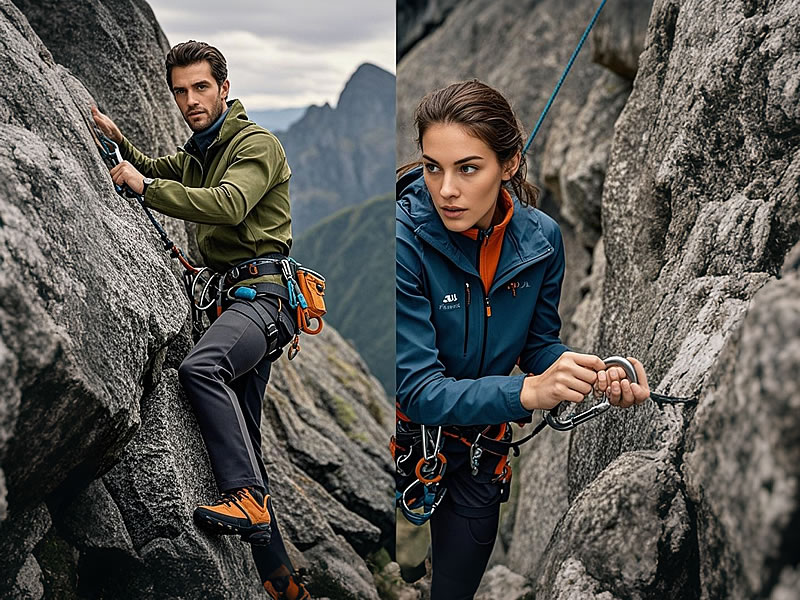
Aluminum Carabiner Clips
Advantages
- Lightweight
- One of the most significant advantages of aluminum carabiners is their low weight. Aluminum is a lightweight metal, which makes these carabiners ideal for activities where every ounce counts, such as long - distance hiking or multi - pitch climbing. For example, a climber who needs to carry multiple carabiners for a day - long climbing expedition will appreciate the reduced load on their gear. This lightweight nature also makes aluminum carabiners more comfortable to carry for extended periods, reducing fatigue.
- Corrosion - Resistance
- Aluminum has natural corrosion - resistant properties. In environments where moisture is present, such as near the ocean or in humid mountain regions, aluminum carabiners are less likely to rust or corrode compared to some other metals. This makes them a reliable choice for outdoor activities. Additionally, many aluminum carabiners are anodized, which further enhances their resistance to corrosion. The anodizing process creates a protective layer on the surface of the aluminum, making it even more durable in harsh conditions.
- Cost - Effective
- Generally, aluminum carabiners are more cost - effective than their steel counterparts. This is due to the relatively lower cost of raw aluminum materials and the manufacturing processes involved. For those on a budget, aluminum carabiners can provide a reliable and affordable option without sacrificing too much in terms of performance. They are a great choice for beginners in climbing or outdoor activities who may not want to invest a large amount of money in their gear initially.
- Disadvantages
- Lower Strength - to - Weight Ratio (Compared to Steel)
- While aluminum carabiners can be strong enough for many applications, they typically have a lower strength - to - weight ratio than steel carabiners. This means that for a given weight, a steel carabiner can often withstand a higher load. In high - stress situations, such as when a climber experiences a sudden fall and exerts a large amount of force on the carabiner, an aluminum carabiner may be more likely to fail compared to a steel one of the same size. However, it's important to note that modern aluminum alloys, such as 7075 - T6 aluminum, are quite strong and are suitable for many recreational and even some professional climbing and outdoor applications.
- Susceptible to Deformation
- Aluminum is a relatively soft metal compared to steel. In situations where the carabiner is subjected to significant impact or bending forces, it may deform more easily. For example, if an aluminum carabiner is dropped from a height onto a hard surface or gets caught and twisted during use, it could potentially lose its original shape. Deformation can compromise the integrity of the carabiner and reduce its load - bearing capacity, making it less safe to use.
- Steel Carabiner Clips
- Advantages
- High Strength
- Steel carabiners are known for their exceptional strength. They can withstand extremely high loads, making them the preferred choice for applications where safety and maximum strength are crucial, such as in professional climbing competitions, industrial lifting operations, and rescue work. Steel alloys, such as stainless steel and high - carbon steel, are used to manufacture carabiners that can handle heavy weights and sudden shock loads without failure. A steel carabiner can often have a much higher breaking strength rating compared to an aluminum one of similar size.
- Durability
- Steel carabiners are highly durable. Their robust nature allows them to resist wear and tear better than aluminum carabiners in demanding environments. They can withstand repeated use, harsh handling, and exposure to abrasive surfaces without significant degradation in performance. In industrial settings where carabiners are used frequently and may come into contact with rough materials, steel carabiners are more likely to maintain their integrity over time.
- Resistance to Deformation
- Due to the hardness of steel, these carabiners are much less likely to deform under normal use. Even if they are subjected to impact or bending forces, they are more likely to retain their original shape compared to aluminum carabiners. This property ensures that the carabiner continues to function as designed, maintaining its load - bearing capacity and safety features.
- Disadvantages
- Heavyweight
- The main drawback of steel carabiners is their weight. Steel is a much denser metal than aluminum, which results in carabiners that are significantly heavier. For activities that require long - distance travel or where portability is a key factor, such as backpacking or alpine climbing, the added weight of steel carabiners can be a burden. Carrying heavy gear for extended periods can increase fatigue and make the activity more physically demanding.
- Prone to Rusting (If Not Stainless Steel)
- Non - stainless steel carabiners are susceptible to rusting when exposed to moisture. Rust can weaken the structure of the carabiner over time, reducing its strength and reliability. Even stainless steel carabiners, while more resistant to rust, are not completely immune in certain corrosive environments, such as those with high salt content. Regular maintenance, such as cleaning and applying rust - inhibiting coatings, is often required to keep steel carabiners in good condition, which can be an added hassle compared to the relatively maintenance - free aluminum carabiners.
- In conclusion, the choice between aluminum and steel carabiner clips depends on your specific requirements. If weight and cost are primary concerns, and you are engaged in less - strenuous activities or recreational use, aluminum carabiners may be the best option. However, if you need maximum strength, durability, and are willing to sacrifice some weight, steel carabiners are the way to go, especially for professional or high - risk applications. Always ensure that the carabiner you choose meets the safety standards and requirements for your intended use.

